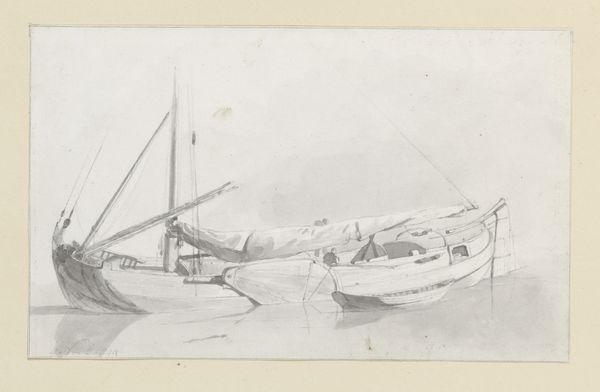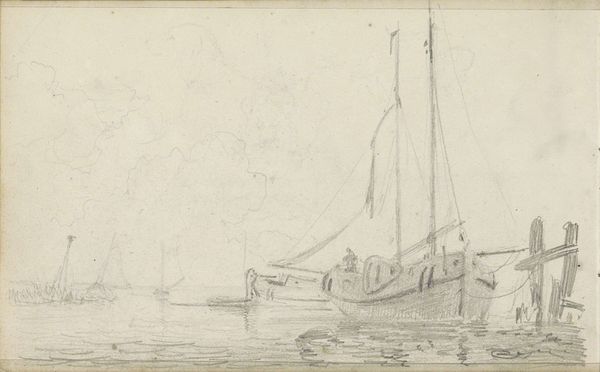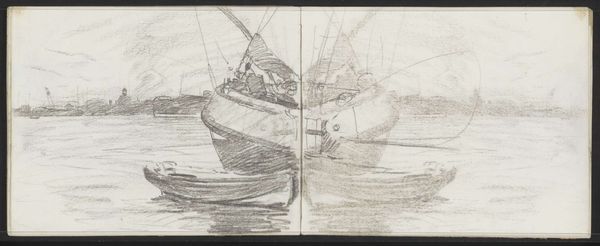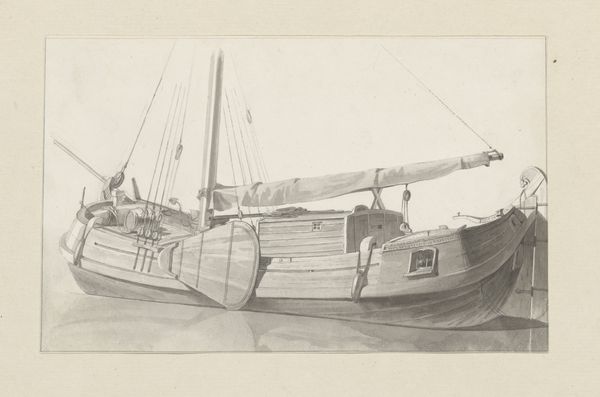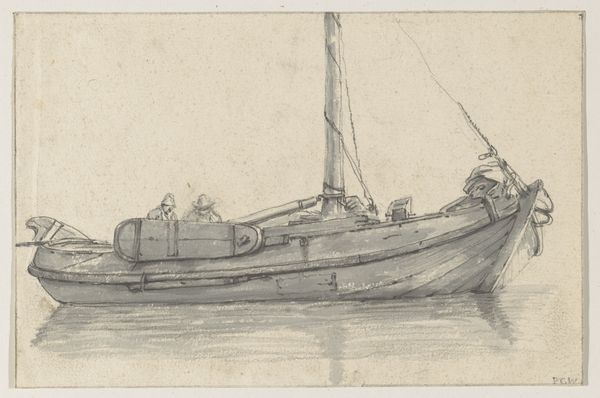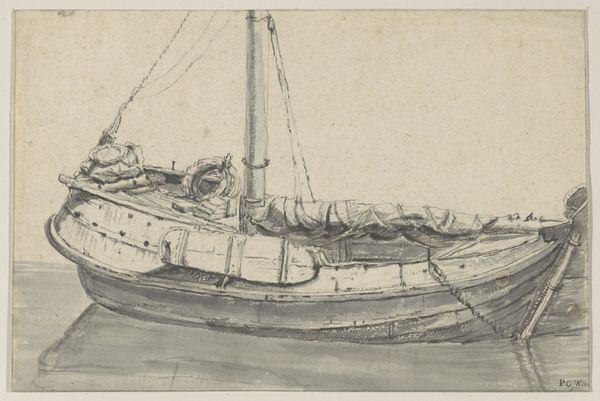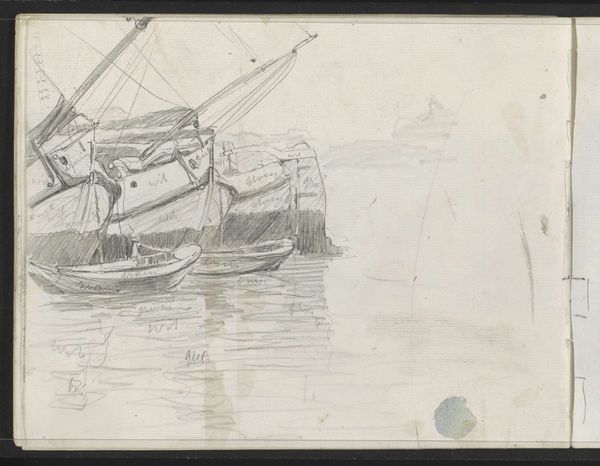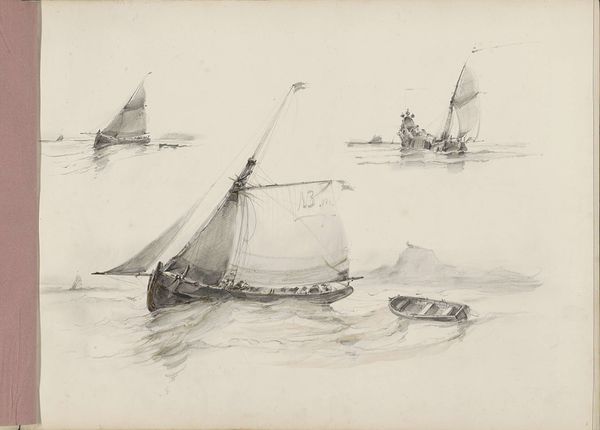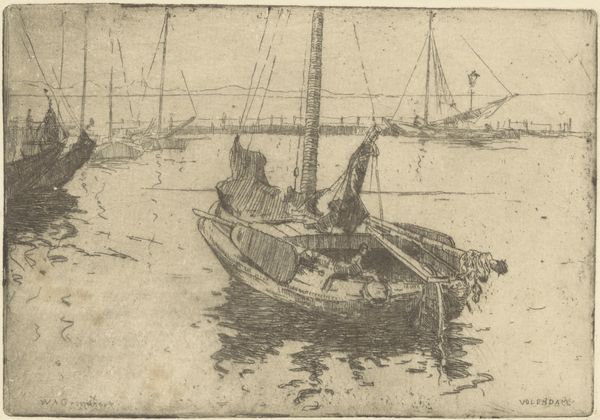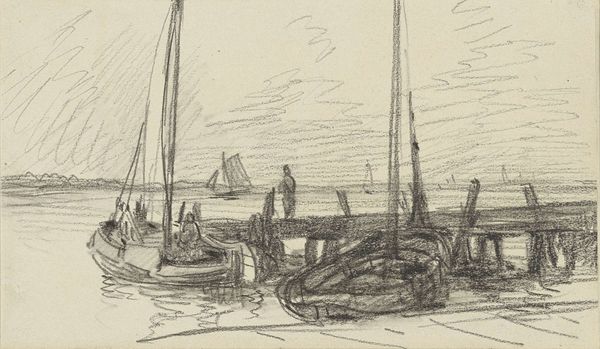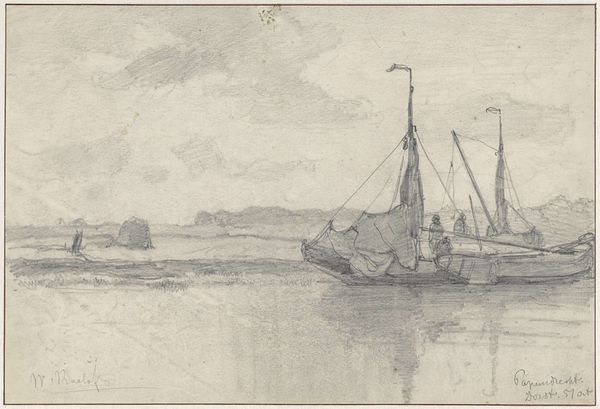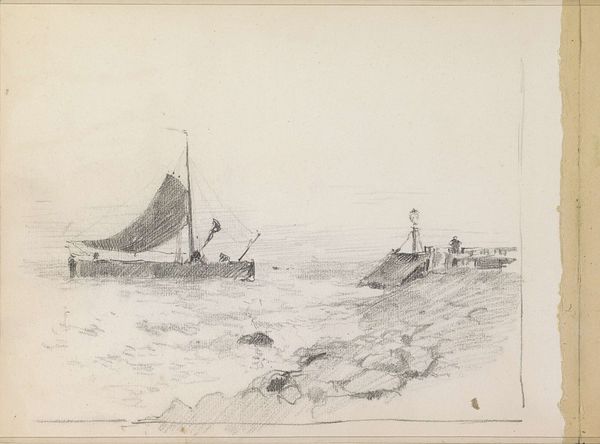
Copyright: Rijks Museum: Open Domain
Editor: Here we have Willem Witsen's "Ships in a Harbour," a pencil and pen drawing made sometime between 1910 and 1915, housed here at the Rijksmuseum. It has an intimate feel, like a page torn from a sketchbook. What story does it tell, in your opinion? Curator: Well, the fact that it resembles a sketchbook page is important. Witsen, like many Impressionists, was interested in capturing fleeting moments, and sketches like this were often preparations for larger, more “finished” works. It’s interesting to consider the social context here. By the early 20th century, the Netherlands was experiencing rapid industrialization, even around these waterways. Editor: So, this image romanticizes a disappearing way of life? Curator: Precisely. There is an inherent tension there. While technology advanced, artists like Witsen looked back at more traditional, arguably "authentic," scenes. Look at the composition, how the vessels seem almost crowded, their masts creating a network of lines. What impression does that give you? Editor: That feels chaotic. Almost as if the ships themselves are resisting change and fighting for space. Curator: An insightful observation. Furthermore, the harbor itself can be seen as a crucial public and commercial area. Do you believe Witsen considered that public use in this picture? Editor: I think so. This is not just a study of light and form. It is more socio-political than it may first appear to the viewer, as the image is charged with this moment of cultural transformation. Curator: Exactly, we often undervalue the social commentary present even in seemingly simple landscapes, it's important to remember art rarely exists in a vacuum. Editor: This drawing offers a lot more depth upon considering these socio-historical components. I see so much more now, thanks!
Comments
No comments
Be the first to comment and join the conversation on the ultimate creative platform.
